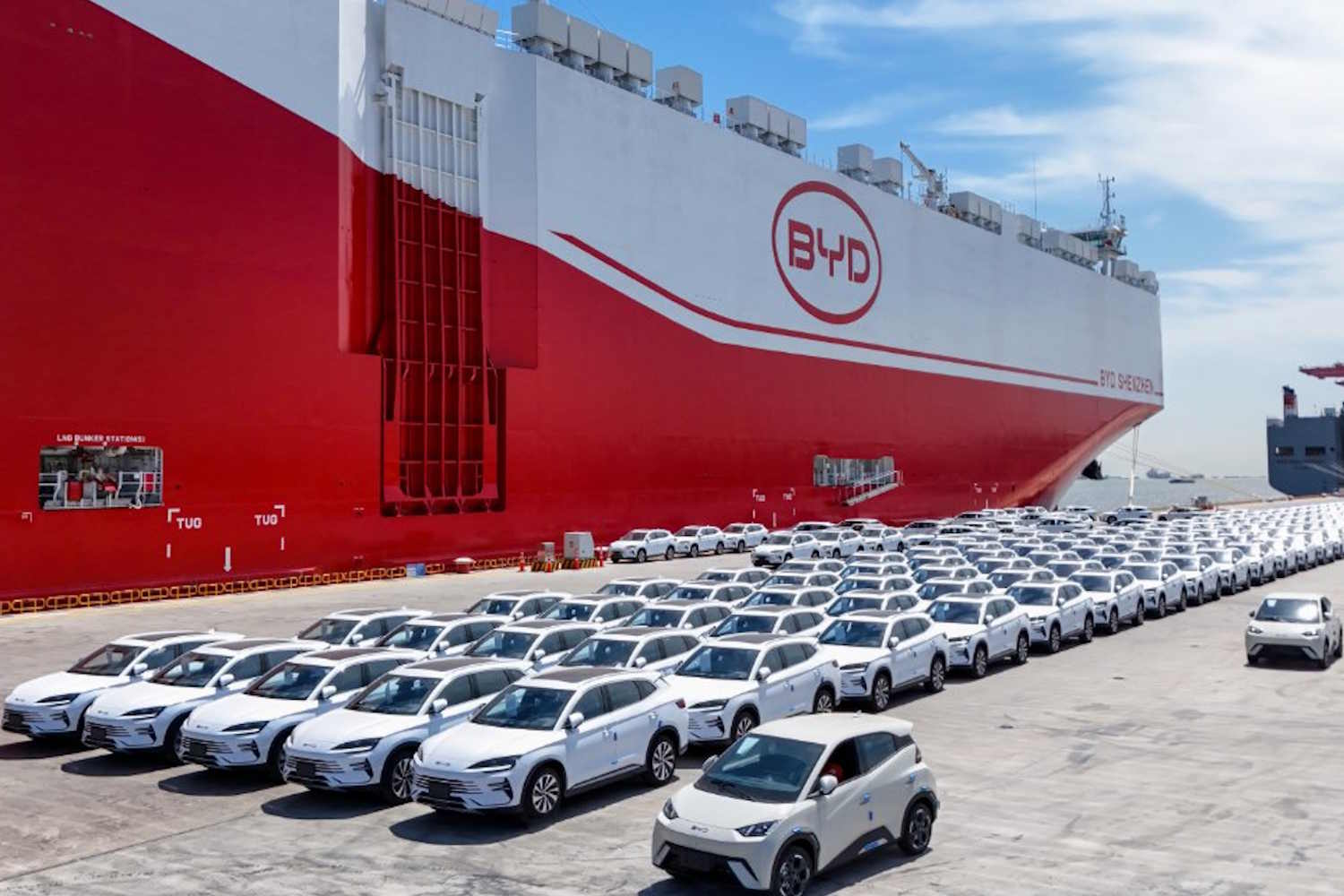The world's largest vehicle transport ship, BYD Shenzhen, brings a new era in sustainable logistics, yet its reliance on fossil fuels raises questions about its true environmental impact.

@People’s Daily, China
The BYD Shenzhen, the world’s largest vehicle transport vessel, can carry up to 9,200 cars. Launched by China’s BYD Group (Build Your Dreams), one of the leading global manufacturers of electric vehicles, this colossal ship recently made headlines after completing a month-long journey, arriving in the Brazilian port of Itajaí with over 7,300 electric and hybrid cars onboard, shipped directly from China.
Heralded as a “historic breakthrough” in sustainable mobility logistics, this news has sparked significant interest. But is everything really as green as it seems?
A massive electric ship, but also an environmental challenge
At 719 feet (219 meters) long and 123 feet (37.7 meters) wide, with a cargo area equivalent to 20 soccer fields, this floating giant represents a new strategy for BYD: integrating production with logistics to significantly reduce transportation costs. However, the “electric” label hides a more complex reality.
China's self-developed car carrier "BYD Shenzhen," the largest of its kind worldwide with 9,200 standard spaces, set off on its maiden voyage from east China's Taicang Port on Sunday.
The 219-meter-long, 37.7-meter-wide ship, carrying over 7,000 new energy vehicles (NEVs), is… pic.twitter.com/fc3PorogFf— People's Daily, China (@PDChina) April 28, 2025
Despite being equipped with a dual-mode system that allows it to operate on both marine diesel and liquefied natural gas, BYD has also integrated its BYDBox batteries, which can power the vessel during maneuvers in ports or in low-emission areas. Nevertheless, the primary fuel source remains fossil fuels, especially for long ocean voyages. As noted by Transport & Environment (2023), global maritime transport accounts for about 3% of global CO₂ emissions, a figure that continues to rise.
Moreover, a ship of this size consumes hundreds of tons of marine fuel per day when operating in non-electric mode. The emissions of nitrogen oxides, sulfur, and particulates remain significant, particularly in ports that lack shore power infrastructure to electrify ships.
Green or greenwashing?
The arrival of this massive vessel in Brazil underscores some of the contradictions within the “green” narrative. While electric cars produced in China and shipped by sea certainly reduce emissions on the road, the long and impactful logistics chain—far from the ideal of local production and short supply chains—undermines the very concept of sustainability.
Some critics also question the environmental costs of electric car production itself, particularly the mining processes for essential battery minerals like lithium, cobalt, and nickel. These supply chains often come with significant environmental and social costs, which are frequently hidden from the end consumer.
Of course, the massive influx of electric vehicles into emerging markets such as South America is a step toward the broader adoption of low-emission mobility. The BYD Shenzhen stands as a powerful symbol of the new electric vehicle era. However, it also serves as a metaphor for the ambiguities inherent in this transition—grand promises, but also major environmental compromises. Simply changing the engine type isn’t enough; a complete rethinking of industrial and logistics models is necessary to prevent the “green” label from becoming just another form of global greenwashing.
